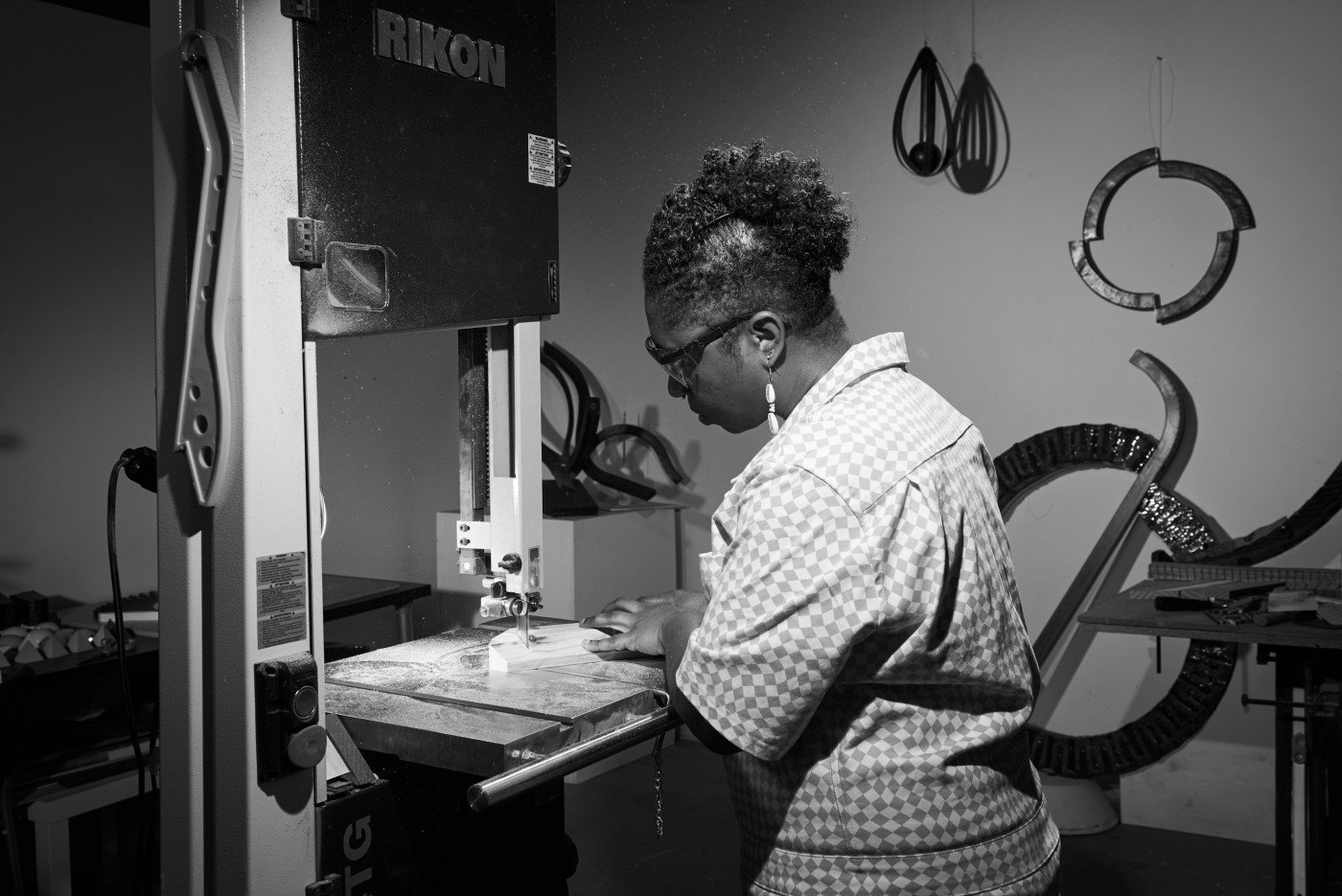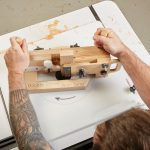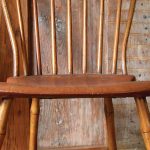We may receive a commission when you use our affiliate links. However, this does not impact our recommendations.
 We’re interviewing makers from across the country. Today we’re featuring Autumn T. Thomas, a wood sculpture artist from Colorado.
We’re interviewing makers from across the country. Today we’re featuring Autumn T. Thomas, a wood sculpture artist from Colorado.
How did you get started woodworking? Who were your mentors?
My journey as a wood sculpture artist was a bit of a surprise to me. After finishing graduate school at the University of the Arts, having studied Book Arts and Printmaking, I did a fellowship at a craft school. There I had the pleasure of meeting wood sculpture artist James McNabb who taught me a very special technique of kerf-cutting wood. For the next several years, I experimented with that technique, learning to work with wood, and falling in love with its nuances. I did not have any other formal training but learned a lot from a fellow woodworker and artist Max Geldman. In 2018, I was awarded an artist residency through Art Gym Denver, which allowed me to dive into my wood sculpture practice. That residency provided the space and support I needed to push me into the creative work that I make today.
I have since received a lot of support and encouragement from some very important people around Colorado and beyond. Rosie Gordon-Wallace and Diaspora Vibe Cultural Arts Incubator (DVCAI) in Miami has sponsored me since 2021 and I would not be where I am without her curatorial and financial support. I also want to recognize Redline Contemporary Art Center and Louise Martorano, who has been an avid supporter of my art practice and small business and I could not be where I am without her and the Redline artist residency. I also want to recognize a few of the arts and business supporters who have helped me to hone my skills, develop business acumen and drive business. Colorado Business for the Arts (CBCA), Bonfils-Stanton Foundation and most recently Rocky Mountain MicroFinance Institute have all invested in me as an artist and entrepreneur and have all played vital roles in my growth. Finally, while I’d love to list all the names of people who have supported me (there are a lot!), I want to shout out very specifically my mom and my close friends who know the ins and outs of how challenging entrepreneurship is, Dr Brenda Mosby who set me on the path to entrepreneurship and the team at Understudy Denver who believed in a dream and ushered it to fruition.

3rd Eye Musings
What do you think is your best or favorite work? What kind of work do you do the most?
The majority of my work is abstract sculpture. I make medium and large size sculptures that can hang from the ceiling, hang on the wall or stand freely. Most of my work also incorporates copper and resin, and I have recently added concrete to my list of materials. I also make cutting boards that are quite unique and incorporate elements from my sculptural work.
A favorite piece that I created is a piece called “3rd Eye Musings”, which is a hanging sculpture. I created it with the woods wenge, and purple heart, copper and resin. It spins as it hangs and is quite beautiful with the shadows that it casts. I think my best works are those that have a lot of fluid movement and are complicated in their simplicity.
 What advice would you give to someone that wants to start woodworking or pursue it as a profession?
What advice would you give to someone that wants to start woodworking or pursue it as a profession?
My best advice would be to embrace the tools, especially power tools, but never get complacent with them; respect their power. I did (and still do) a lot of research, learning different techniques, safety procedures and avoidable mistakes. Power tools are not required for woodworking, but they have proven to be the best for the work that I make. I would also say that the work is not dependent upon a lot of different tools. I prefer to get really proficient with my main tools and let the creativity come from their uses. Most times, one or two tools that are sharp and well-maintained will yield infinitely better results than a lot of cheaply made, dull tools. The rest is up to the creativity of the user.
Another bit of advice I have is to stay creative. There are a lot of similar things being made but with a little ingenuity, new and creative things are possible. I recommend watching a lot – A LOT – of woodworking videos; watch the masters, not for what they make, but for their patience, knowledge, tricks and jokes. Once you know some simple techniques, they can be used and combined to make some intricate, inventive, beautiful things.
One last tip I have is to decide on a particular species of wood and hardness and get used to that wood for an extended amount of time. Different woods tend to behave differently and can add to the frustration of learning woodworking.
 What’s your best hands-on tip or woodworking technique?
What’s your best hands-on tip or woodworking technique?
First, I would recommend always keeping tools sharp, no matter what tool it is. Whether it is a chisel, a saw blade, or a pencil – a sharp tool can make work productive and safe. A dull blade is not only frustrating, it is very dangerous and can cause all sorts of problems and timesinks.
The second tip I would share is to make lots of things…and mistakes, and try not to throw mistakes away. There are so many techniques to learn and what can be considered a mistake one day, may be the exact thing you need the next day.
My best woodworking technique is to stay focused on the blade and the wood and not let my mind wander away from what I am doing. If I feel any hesitation in the wood or in my body, I stop and check in. If there is any tension in the wood, I do not continue the cut. If there is tension in my body, I do not continue the cut.
Is there anyone you’d like to shout-out or recommend we follow? Who inspires you? (Doesn’t have to be woodworking related, either.)
I recommend you follow wood artists Les Powers, Chris Deknikker, and Derik Penny. Their work inspires me daily. I am also moved by the work of Martin Puryear, Richard Serra, Wangechi Mutu, Jae Ko, Toyin Ojih Odutola, dancer Charles “Lil Buck” Riley, various other dancers, performance artists, musicians and architectural design. I find beauty in the shape and movement of EVERYTHING and I do my best to replicate that movement with wood.
See more of Autumn’s work on Instagram @seasonsofautumn and her website: www.atthomas.com

This interview was lightly edited for clarity.
Here are some supplies and tools we find essential in our everyday work around the shop. We may receive a commission from sales referred by our links; however, we have carefully selected these products for their usefulness and quality.








